Overview
Embark on a journey that will awaken your senses and ignite your spirit of adventure. Our 3-day desert tour from Fes to Marrakech is not just a trip; it's a passage through time, culture, and some of the most breathtaking landscapes on Earth. Picture yourself standing atop a golden dune, the Sahara stretching endlessly before you, as the sun paints the sky in hues you've only dreamed of. This isn't just travel; it's transformation.
As a seasoned guide who has traversed these ancient routes countless times, I can tell you that no two journeys are ever the same. The desert, like a living entity, reveals its secrets to those who approach with respect and wonder. From the moment we leave the labyrinthine medina of Fes to the instant we enter the bustling souks of Marrakech, every mile is infused with the rich tapestry of Moroccan life.
But let me be clear: this is not a tour for the faint of heart or those seeking luxury at every turn. It's for the curious, the adventurous, the seekers of authentic experiences. You'll feel the gentle sway of a camel beneath you, taste bread baked in the sand, and sleep under a canopy of stars so vast it will humble you.
Time is of the essence, my friends. The Sahara's beauty is timeless, but your chance to experience it is now. In just three days, you'll traverse centuries of history and cross landscapes that will leave you forever changed. Are you ready to answer the call of the desert? Let's begin this extraordinary journey together.
Duration: 3 days/2 nights
Itinerary: Fes to Marrakech

Price: from €240
Tour availability: Everyday
Highlights of the 3 days tour from Fes
Exploring Ifrane: Known as "Morocco’s Little Switzerland," with its Alpine charm.
Spotting Barbary Macaques: In the cedar forests of the Middle Atlas Mountains.
Driving Through Ziz Valley: A stunning oasis with over a million date palms.
Sunset in the Sahara: Watching the dunes of Erg Chebbi change colors.
Camel Trek at Sunrise: Immersive ride through the golden Sahara dunes.
Luxury Desert Camp: Stargazing and enjoying Berber music under a desert sky.
Rissani Market: A vibrant experience of local crafts, dates, and culture.
Todra Gorge: Towering rock walls and scenic landscapes in the High Atlas.
Ait Benhaddou Kasbah: UNESCO World Heritage site and film location.
Crossing Tizi n'Tichka Pass: Spectacular views of the High Atlas Mountains.
Itinerary of Fes Desert Tour 3 Days to Marrakech:
Day 1: Fes to Merzouga
As the sun rises over Fes, casting long shadows across the ancient medina, our adventure begins. We'll depart early, leaving behind the intricate mosaics and bustling souks for the open road. Buckle up, my friends, because this day is a feast for the eyes and a journey through Morocco's diverse landscapes.
Our trusty 4x4 vehicles will carry us south, winding through the Middle Atlas Mountains. Watch as the urban sprawl gives way to cedar forests and rolling hills. Keep your eyes peeled for Barbary macaques – these mischievous primates often make surprise appearances along the roadside.
We'll make a brief stop in Ifrane, affectionately known as "Little Switzerland." Don't be surprised if you do a double-take – the Alpine-style architecture here is a stark contrast to what you might expect in Morocco. It's a perfect spot for a quick coffee and a stretch of the legs.
As we continue our journey, the landscape gradually transforms. The lush greenery fades, replaced by arid plains and rocky outcrops. We're entering the gateway to the Sahara, and you can feel the anticipation building.
Our lunch stop in Midelt offers a chance to sample local Berber cuisine. I recommend trying the tagine – slow-cooked to perfection, it's a taste of traditional Morocco you won't forget.
The afternoon drive takes us through the Ziz Valley, a spectacular gorge carved by the Ziz River. The sudden burst of green from the palm oases is a stark and beautiful contrast to the surrounding barren landscape. Trust me, you'll want your camera ready for this.
As the day wanes, the first glimpses of the Sahara's golden dunes appear on the horizon. We're approaching Merzouga, the gateway to Erg Chebbi, one of the Sahara's seas of dunes. The sight of these massive sand mountains, changing color with the setting sun, is nothing short of magical.
We'll arrive at our accommodation on the edge of the desert just as the stars begin to appear. Tonight, rest up and prepare yourself. Tomorrow, we venture into the heart of the Sahara, where the real magic begins. The desert is calling, and soon, you'll answer.
The Middle Atlas Mountains
Buckle up, adventurers! As we leave Fes behind, we're about to climb into the embrace of the Middle Atlas. This isn't just a mountain range; it's Morocco's green heart, a stark contrast to the arid landscapes we'll encounter later.
The air gets cooler as we ascend, and you'll notice the vegetation changing. Gone are the olive groves of the lowlands, replaced by vast forests of cedar and oak. These woods are ancient, whispering tales of Berber tribes and long-forgotten trade routes.
Keep your eyes peeled for the Barbary macaques! These tailless monkeys are the only primates found north of the Sahara, and they're not camera shy. But remember, we're guests in their home – observe respectfully.
As we wind through the mountains, you'll see why this region is often called Morocco's "Little Switzerland." Charming villages with red-roofed houses dot the landscape, looking almost out of place in North Africa. It's a testament to Morocco's incredible diversity.
The Middle Atlas isn't just pretty; it's the water tower of Morocco. The rain and snow that fall here feed the country's major rivers, sustaining life far into the arid south. It's a powerful reminder of nature's interconnectedness.
We'll make a few stops along the way. Stretch your legs, breathe in that crisp mountain air, and if you're lucky, you might spot a traditional Berber shepherd with his flock. This is your chance to snap some truly unique photos – trust me, your Instagram followers will thank you!
As we continue our journey, watch how the landscape gradually shifts. The lush forests will slowly give way to scrubland, then to more arid terrain. It's like watching a timelapse of climate zones, all in a day's drive.
Remember, friends, this is just the beginning. The Middle Atlas is our first taste of Morocco's incredible geographic diversity. Soak it in, because soon, we'll be trading these green peaks for golden dunes. The desert awaits, but for now, let's enjoy this alpine interlude in our Moroccan adventure.
Ifrane: Morocco's Little Switzerland
Hold onto your hats, folks, because we're about to experience a slice of the Alps... in Africa! Welcome to Ifrane, a town so unexpected it'll make you question if you've accidentally teleported to Europe.
As we roll into Ifране, you'll be struck by the red-roofed chalets, neatly manicured gardens, and clean, wide streets. This isn't your typical Moroccan city, and that's exactly what makes it so fascinating. Built by the French in the 1930s as a cool retreat from the summer heat, Ifrane has maintained its unique character.
Now, I've guided countless tours through here, and I still get a kick out of watching people's reactions. It's like someone picked up a Swiss village and dropped it smack in the middle of Morocco. The crisp mountain air and pine-scented breeze only add to the illusion.
We'll take a short break here, giving you a chance to stretch your legs and explore. Stroll through the town center and you might spot the famous lion statue. Carved by a German prisoner during World War II, it's become the symbol of Ifrane. Don't forget to snap a photo – it's a great way to boggle the minds of folks back home!
If we're lucky with our timing, you might see students from Al Akhawayn University, one of Morocco's most prestigious institutions. Their presence adds a youthful energy to this alpine-style town.
Now, here's a pro tip: Ifrane is known for its delicious apples. If they're in season, do yourself a favor and try one. It's a sweet, crisp taste of the Middle Atlas that you won't forget.
As we prepare to leave, take a moment to appreciate this quirky gem. Ifrane is a testament to Morocco's diversity, a country where Alpine architecture can coexist with ancient medinas and vast deserts. It's this kind of contrast that makes Morocco a never-ending source of wonder.
Alright, adventurers, soak in that last breath of cool mountain air. We're about to continue our journey, and trust me, the landscapes are about to get a whole lot different. The Sahara is calling, and we've got a date with the dunes!
Midelt: Gateway to the Sahara
Alright, desert dreamers, we're about to enter Midelt – the town where the Atlas Mountains wave goodbye and the Sahara starts to whisper its secrets. This isn't just a pit stop; it's where you'll feel the shift in the air, the first hints of the adventure that awaits.
As we roll into Midelt, you'll notice the landscape changing. The lush greens of the Middle Atlas are fading, giving way to a rockier, more arid terrain. This is where the cool mountain breezes start to carry the warmth of the desert. Take a deep breath – that's the scent of anticipation.
Now, Midelt might not look like much at first glance, but don't be fooled. This town is the apple capital of Morocco. That's right, apples in the desert! It's a testament to the ingenuity of Moroccan farmers. If we're in season, we'll stop at a local market. Trust me, biting into a crisp Midelt apple is like tasting the last bit of mountain freshness before we plunge into the Sahara.
But Midelt's real claim to fame? It's the gateway to the Sahara. This is where caravans have stopped for centuries, preparing for the long journey across the desert. And we're following in their footsteps.
We'll take our lunch break here, and I highly recommend trying the local tagine. It's slow-cooked to perfection, often with locally sourced meat and those famous Midelt apples. It's a flavor combination that'll knock your socks off – good thing we're headed to the desert, eh?
While we're here, keep your eyes peeled for local Berber textiles. Midelt is known for its handwoven rugs, each one telling a story in vibrant colors and intricate patterns. If you're looking for an authentic souvenir, this is your chance.
As we prepare to leave Midelt, take a moment to look south. See those hazy outlines on the horizon? Those are the first hints of the Sahara. The real desert adventure is about to begin.
Buckle up, my friends. We're leaving the last outpost of the green world behind. Ahead of us lies a landscape of incredible beauty and stark contrasts. Midelt is our gateway, and beyond it, the Sahara is calling our names. Are you ready to answer?
Ziz Valley and Palm Groves
Alright, adventure seekers, get ready for a feast for your eyes! We're about to enter the Ziz Valley, a place where Mother Nature really shows off her artistic skills. This isn't just a valley; it's a lifeline cutting through the arid landscape, a green serpent of life in a sea of rock and sand.
As we descend into the valley, you'll be struck by the sudden explosion of green. Palm trees, as far as the eye can see, standing tall and proud against the backdrop of golden cliffs. This, my friends, is what we call a Moroccan oasis, and it's not a mirage – I promise!
The Ziz River is the star of the show here. It's been carving this dramatic gorge for millions of years, creating a perfect environment for date palms to thrive. And thrive they do! There are over a million date palms in this valley. That's right, a million! It's like nature's own skyscraper city.
We'll stop at a panoramic viewpoint, and trust me, you'll want your cameras ready. The contrast between the lush green of the palms and the warm tones of the surrounding desert is simply breathtaking. It's the kind of view that makes you understand why oases were considered sacred in ancient times.
Now, let me let you in on a little secret. If we're here in the right season, usually around October, you might see the palms heavy with ripe dates. The locals call this period "Guetna," and it's a time of celebration. If we're lucky, we might even get to taste some freshly harvested dates – they're nature's candy, I tell you!
As we drive through the valley, keep your eyes peeled for the traditional mud-brick ksour, or fortified villages. These ancient structures blend seamlessly with the landscape, a testament to the ingenuity of the local Berber people who've called this valley home for centuries.
The Ziz Valley is more than just a pretty view, though. It's a lifeline for the region, providing water and fertile soil in an otherwise harsh environment. It's a powerful reminder of the resilience of both nature and the human spirit.
So, soak it all in, my friends. Let the beauty of the Ziz Valley fill your senses. Because soon, we'll be leaving this green haven behind and venturing into the golden world of the Sahara. The contrast couldn't be more striking, and that's what makes this journey so incredible. Are you ready for what comes next?
Arrival in Merzouga
Hold onto your hats, folks, because we've reached the gateway to the great Sahara itself – Merzouga! As we roll into this small desert town, you'll feel the excitement crackling in the air like static electricity. This is it, the moment you've been waiting for.
Look to the horizon, and you'll see them – the famous dunes of Erg Chebbi rising up like a golden mirage. But trust me, there's nothing illusory about these sand giants. They're very real, and tomorrow, we'll be getting up close and personal with them.
Merzouga itself might seem unassuming at first glance, but don't be fooled. This tiny town is the launching pad for grand adventures. The locals here have sand in their veins and hospitality in their hearts. You'll see faces weathered by the desert sun, but always ready with a warm smile and a "Marhaba" (that's "hello" in Arabic, by the way).
We'll be staying at the edge of town tonight, right where the buildings give way to the endless sea of sand. As we settle in, take a moment to stand outside and just breathe. Feel that? That's the desert air, dry and crisp, carrying whispers of adventures to come.
Now, I've got a treat for you. If we time it right, we'll catch the sunset over the dunes. Let me tell you, there's nothing quite like watching the sun dip below the Sahara horizon. The dunes change color like a chameleon, shifting from gold to orange to pink in a matter of minutes. It's nature's own light show, and it happens every single day. Can you believe it?
After sunset, take some time to explore our accommodations. Whether we're in a traditional Berber camp or a desert auberge, you'll find comfort with a distinctly Moroccan flavor. Enjoy a cup of mint tea – it's not just a drink here, it's a ritual of hospitality.
As night falls, step outside again. Look up, and prepare to have your mind blown. Out here, away from city lights, the night sky comes alive. You'll see more stars than you ever thought possible, spread out like a glittering canopy. It's humbling and awe-inspiring all at once.
Get a good night's rest, my friends, because tomorrow, the real desert adventure begins. We'll be up with the sun, ready to explore the mighty Erg Chebbi. The Sahara is calling, and in just a few hours, we'll answer that call in the most spectacular way possible. Sweet dreams, and see you at dawn!
Day 2: Sahara Desert Experience
Rise and shine, desert explorers! Today's the day you've been dreaming of – your date with the mighty Sahara. As the first rays of sunlight kiss the dunes, we're going to dive headfirst into an adventure that'll stay with you for a lifetime.
We'll kick off our day with a sunrise camel trek. Now, I know what you're thinking – camels? At dawn? Trust me, once you're swaying atop these ships of the desert, watching the world awaken in a burst of colors, you'll thank me. It's a pinch-me moment if there ever was one.
But the day's just getting started. After breakfast, we'll dive deeper into the heart of Erg Chebbi. These colossal dunes aren't just piles of sand; they're a dynamic, ever-changing landscape. We'll learn about the unique ecosystem here, spot desert wildlife (keep your eyes peeled for fennec foxes!), and maybe even try our hand at sandboarding. It's like snowboarding, but way, way warmer!
Midday, we'll seek shelter from the sun in a traditional Berber tent. Here's where you'll get a taste – literally – of desert hospitality. Sip on mint tea, savor a tagine cooked over open flames, and listen to stories that have been passed down through generations of desert dwellers.
As the afternoon heat subsides, we'll venture out to a nearby Berber village. This isn't some tourist setup; it's a real, living community where people have adapted to thrive in one of the harshest environments on Earth. You'll witness firsthand the ingenuity and resilience of the Saharan people.
But the real magic happens as the sun begins to set. We'll climb to the top of a massive dune and watch as the Sahara puts on its nightly show. The changing colors of the sand, the long shadows, the vast sky – it's a spectacle that no photograph can truly capture. You've got to see it with your own eyes to believe it.
And just when you think the day can't get any better, night falls. We'll gather around a campfire under a canopy of stars so bright and numerous, it'll take your breath away. Listen to the haunting melodies of traditional Berber music, share stories with your fellow travelers, and ponder the vastness of the universe.
Tonight, you'll sleep in a luxury desert camp, surrounded by nothing but sand and stars. The silence of the desert is profound, broken only by the whisper of wind over dunes. It's a night you'll never forget.
So buckle up, my friends. Today, you're not just visiting the Sahara – you're becoming part of its story. Every grain of sand, every moment, is an adventure waiting to happen. Are you ready to make some memories?
Camel Trek at Sunrise
Alright, early birds, it's time for the experience of a lifetime! We're up before the sun, and trust me, you won't regret it. There's something magical about the pre-dawn Sahara – the air is cool, the world is quiet, and the anticipation is electric.
As we approach our ships of the desert, let me give you a quick Camel 101. These magnificent creatures aren't just transportation; they're a vital part of Saharan culture. Our Berber guides have a special bond with these animals, and you'll soon see why. Don't be intimidated by their size – they're gentle giants with personalities as big as the desert itself.
Mounting a camel is an adventure in itself. As it rises, you'll feel like you're on a slow-motion roller coaster. Pro tip: lean back as it stands up, then forward as it straightens its back legs. Before you know it, you'll be perched high above the sand, ready to set off.
As we start our trek, the eastern sky begins to lighten. The dunes around us are still shrouded in shadow, mysterious shapes in the pre-dawn light. The only sound is the soft padding of camel feet on sand – it's a silence so profound you can almost hear your own heartbeat.
Then, the magic happens. The sun peeks over the horizon, and the Sahara comes alive. It's like someone's flipped a switch, turning the world from cool blues to warm golds and pinks. The light catches the ripples in the sand, creating patterns that seem to shift before your eyes. This, my friends, is why we got up so early.
As we continue our trek, watch how the dunes cast long shadows across the desert floor. It's nature's own light show, changing by the minute. And the best part? You're not just watching it – you're part of it, moving through this incredible landscape on the back of a camel, just as travelers have done for centuries.
Keep your eyes peeled for desert wildlife. The early morning is when many creatures are active. You might spot a desert lark taking flight or, if you're really lucky, catch a glimpse of a fennec fox.
As the sun climbs higher, we'll make our way back to camp. By now, you'll have found your camel-riding groove, swaying in rhythm with your mount. It's a feeling unlike any other – part transportation, part meditation.
When we dismount, take a moment to thank your camel and the guides. You've just participated in a tradition that's as old as the desert itself. The sunrise camel trek isn't just a tourist activity; it's a journey through time, space, and culture. And the best part? Your day in the Sahara is only just beginning. How's that for a wake-up call?
Erg Chebbi Sand Dunes
Welcome to the main event, adventurers! The Erg Chebbi dunes are the crown jewels of the Moroccan Sahara, and we're about to get up close and personal with these sandy giants. Buckle up, because this is where the real desert magic happens.
First things first – let's talk scale. These aren't just any sand dunes; we're looking at mountains of sand that stretch up to 150 meters high. That's taller than a 40-story building, folks! And they sprawl over an area of 50 kilometers from north to south. It's a sea of sand that'll make you feel tiny in the best possible way.
Now, here's a little-known fact: the sand here isn't just any old sand. It's fine, almost silky to the touch, and ranges in color from pale gold to rich orange, depending on the time of day. Go ahead, take off your shoes and let it run through your toes. You're touching particles that have been shaped by wind and time for thousands of years.
Speaking of wind, it's the true artist here. Watch closely, and you might see it in action, sculpting the dunes right before your eyes. Those ripples on the sand surface? They're called wind ripples, and they're constantly shifting, giving the dunes a living, breathing quality.
We'll take some time to explore these majestic dunes up close. As we climb, you'll notice how the sand gives way under your feet, making each step a mini-workout. But trust me, the view from the top is worth every ounce of effort. From the crest of a dune, you can see for miles in every direction – it's like being on top of a golden, undulating ocean.
For the thrill-seekers among us, we've got sandboarding on the agenda. Imagine snowboarding, but swap the snow for sand and the cold for desert heat. It's an adrenaline rush like no other, zooming down the face of a dune with nothing but sand and sky in your field of vision.
As the day progresses, keep an eye on how the dunes change color. They're like nature's mood ring, shifting from pale yellow in the harsh midday sun to deep orange and even purple as the sun sets. It's a photographer's dream, so keep those cameras ready!
But Erg Chebbi isn't just about looks. These dunes are home to a surprising amount of life. Keep your eyes peeled for desert fauna like scarab beetles, desert foxes, and if we're really lucky, the elusive desert hedgehog.
As night falls, we'll experience the dunes in a whole new light – or rather, lack thereof. The stars come out in force here, unpolluted by city lights. Lying on the still-warm sand, gazing up at the Milky Way, you'll feel like you're on another planet entirely.
Remember, folks, the Erg Chebbi dunes aren't just a sight to see – they're an experience to feel, to breathe, to live. This is the Sahara in all its raw, majestic glory. Soak it in, because there's truly nowhere else on Earth quite like it.
Berber Village Visit
Alright, culture enthusiasts, it's time to peel back the curtain on Saharan life! We're about to step into a real, living, breathing Berber village. This isn't some tourist setup – it's the real deal, a chance to witness a way of life that's remained largely unchanged for centuries.
As we approach the village, you'll notice how it seems to grow out of the landscape. The mud-brick houses, colored in earthy tones, blend seamlessly with the desert surroundings. It's like the village is part of the Sahara itself – and in many ways, it is.
Now, let me give you a quick Berber 101. The Berbers, or Amazigh as they call themselves, are the indigenous people of North Africa. They've been living in harmony with this harsh environment for thousands of years, and their culture is as rich and deep as the Sahara itself.
As we enter the village, keep your senses on high alert. Breathe in the aroma of freshly baked bread wafting from traditional ovens. Listen to the rhythmic clinking of metal as artisans work on their crafts. Watch the vibrant fabrics of the women's dresses as they go about their daily tasks.
We'll have the chance to visit a family home – and let me tell you, Berber hospitality is something else. Don't be surprised if you're offered mint tea within minutes of arriving. It's not just a drink here; it's a ritual, a symbol of welcome. The tea is poured from a height to create a froth, and it's considered polite to accept at least two glasses.
As we explore, you'll see firsthand how these resilient people have adapted to desert life. Check out the ingenious irrigation systems that make agriculture possible in this arid land. Marvel at the intricate designs of handwoven carpets, each one telling a story in wool and dye.
We'll visit the village well – the lifeblood of the community. It's not just a source of water; it's a social hub where news is exchanged and friendships are forged. If we're lucky, we might even get to try our hand at drawing water the traditional way!
Keep an eye out for the village elders. These living libraries hold centuries of wisdom in their weathered faces. Don't be shy – a smile and a respectful "Salam" (hello) can often lead to fascinating exchanges, even if you don't speak the same language.
As we wrap up our visit, take a moment to reflect. What you've seen here isn't just a glimpse into another culture – it's a window into a different way of life, one that's intimately connected to the rhythms of the desert. It's a powerful reminder of human resilience and the deep roots we can put down, even in the most challenging environments.
Remember, folks, we're guests here. Let's tread lightly, respect the customs, and leave nothing but footprints. The memories, though? Those you can take with you, and trust me, they'll last a lifetime.
Desert Activities and Exploration
Alright, thrill-seekers and nature lovers, it's time to really get our hands (and feet) sandy! The Sahara isn't just a pretty backdrop; it's a giant playground waiting to be explored. So, let's dive into some heart-pumping desert activities that'll give you stories to tell for years to come.
First up, we've got sandboarding. Think snowboarding, but swap the cold powder for warm sand. We'll climb to the top of a towering dune, strap on a board, and zoom down the face of it. The rush of sand beneath you, the wind in your hair – it's an adrenaline kick like no other. Don't worry if you're a newbie; even the tumbles are soft in this giant sandbox!
For those who prefer to keep their feet on solid ground (well, as solid as sand can be), we've got some epic dune hiking. It's a workout, no doubt about it, but the views from the top? Absolutely worth every step. As you crest each dune, you'll be rewarded with a new, breathtaking panorama of the Sahara stretching out to the horizon.
Now, let's slow things down a bit and tap into your inner desert scientist. We'll do some sand tracking, learning to identify the footprints of desert creatures. From the delicate trails of beetles to the distinctive marks of fennec foxes, it's like reading a story written in sand. You'll start to see the desert as a bustling metropolis of wildlife.
For the photographers among us, we'll have a mini desert photo safari. The Sahara is a dream for shutterbugs, with its ever-changing light, dramatic landscapes, and unique flora and fauna. I'll show you some tricks for capturing those Instagram-worthy shots, from getting the perfect dune ripple to framing the desert sunset.
As the day heats up, we'll try our hand at some traditional Berber games. Ever heard of Sig? It's a bit like desert hockey, played with palm fronds and a ball made of tightly wound fabric. It's a great way to connect with local culture and maybe work up a sweat in the process.
For those interested in the Sahara's ancient history, we'll do some fossil hunting. Believe it or not, this desert was once an ocean floor, and evidence of marine life from millions of years ago can still be found. It's like a treasure hunt where every find is millions of years old!
As the sun begins to set, we'll engage in one of the most timeless desert activities – stargazing. With zero light pollution, the night sky here is a spectacle you have to see to believe. We'll learn to identify constellations and planets, just as desert travelers have done for millennia.
Remember, folks, the desert is as fragile as it is beautiful. We'll follow Leave No Trace principles throughout our explorations. Take nothing but photos, leave nothing but footprints, and kill nothing but time.
So, adventurers, are you ready to make the Sahara your playground? Whether you're racing down dunes or quietly contemplating the vast expanse, these activities will help you connect with the desert in ways you never imagined. The Sahara is calling – let's answer!
Luxury Desert Camp
Alright, desert adventurers, it's time to experience the Sahara in style! Our luxury desert camp is where "roughing it" meets "living like a sheikh." Trust me, this isn't your average camping trip – we're talking five-star comfort under a canopy of stars.
As we approach the camp, you'll see a cluster of traditional Berber tents rising from the sand like a mirage. But don't let their rustic exterior fool you. Step inside, and you're entering a world of plush comfort that would make the ancient caravans green with envy.
Each tent is a private oasis, decked out with proper beds (yes, real beds in the desert!), soft linens, and Moroccan-inspired décor. You've got your own ensuite bathroom too – no midnight treks across the sand here! It's like someone picked up a luxury hotel room and dropped it right in the middle of the Sahara.
But the real magic happens when you step outside. Imagine sinking into soft cushions around a crackling fire, sipping on mint tea or something stronger, as the sun paints the dunes in shades of gold and pink. This, my friends, is what desert dreams are made of.
Dinner at our camp is a feast for all senses. Our chef whips up a blend of traditional Moroccan and international cuisine that would put many city restaurants to shame. Tagine, couscous, grilled meats – all prepared with local ingredients and served under the stars. And for dessert? How about some sweet pastries paired with a side of Saharan stargazing?
Speaking of stars, prepare to have your mind blown. With zero light pollution, the night sky out here is like nothing you've ever seen. We've got telescopes set up for those who want a closer look at the celestial show. Jupiter's moons, Saturn's rings – they're all waiting for you to discover them.
For those looking to unwind, we've got a spa tent where you can indulge in a traditional Moroccan massage. There's nothing quite like working out the kinks from a day of desert exploration while listening to the gentle whisper of wind over sand.
As night falls, the camp comes alive with the sounds of traditional Berber music. Our local musicians will treat you to haunting melodies and rhythmic drum beats that seem to echo the heartbeat of the desert itself. Feel free to join in – desert dance lessons are always a hit!
When it's time to turn in, you'll drift off to sleep in perfect comfort, surrounded by the profound silence of the Sahara. And in the morning? How about breakfast on your private terrace, watching the sun rise over the dunes?
Remember, folks, this luxury camp isn't just about indulgence – it's about experiencing the desert in a way that connects you deeply with this incredible environment. It's the perfect blend of adventure and comfort, authenticity and luxury.
So, are you ready for a night in your five-billion-star hotel? The Sahara is waiting to show you its softer side, and believe me, you're in for a treat!
Stargazing and Traditional Music
Alright, night owls and melody lovers, get ready for a sensory explosion that'll make your soul sing! As the sun dips below the dunes, we're in for a double treat – a celestial spectacle above and a cultural symphony below.
First up, let's talk stars. Folks, you haven't seen stars until you've seen them from the Sahara. As darkness falls, the sky erupts into a dazzling display that'll have you questioning everything you thought you knew about the night sky. We're talking millions of stars, so bright and numerous it's like someone spilled a jar of cosmic glitter overhead.
We've got telescopes set up, and I'll be pointing out constellations that have guided desert travelers for millennia. See that bright one there? That's Polaris, the North Star. Imagine ancient caravans using that very star to navigate these vast sand seas. It's like peeking into a celestial time machine!
Keep your eyes peeled for shooting stars – they're common out here, and legend has it that wishes made on Saharan shooting stars are extra potent. Who knows? Maybe the desert magic will grant yours!
Now, while your eyes are feasting on the cosmic buffet above, your ears are in for a treat too. We've got local Berber musicians joining us, and trust me, they're about to take you on a journey through sound.
The music starts soft, almost imperceptible at first. The gentle strumming of a guembri (that's a three-stringed lute) mingles with the whisper of wind over sand. Then, the drums kick in – not loud and brash, but a rhythmic heartbeat that seems to echo the pulse of the desert itself.
As the music builds, you'll hear vocals that'll send shivers down your spine. These aren't just songs; they're stories passed down through generations, tales of love, loss, and desert life sung in a language as old as the dunes themselves.
Feel free to close your eyes and let the music wash over you, or keep them open and watch how the flickering firelight plays on the musicians' faces. Either way, you're experiencing a tradition that's been a part of desert life for centuries.
And here's the kicker – this isn't a show put on for tourists. This is real, authentic Berber music, the kind you'd hear at local celebrations. Our musicians aren't performers; they're storytellers, keeping their culture alive one note at a time.
As the night wears on, don't be surprised if you feel the urge to move. Desert music has a way of getting into your bones. Go ahead, let loose! There's no better dance floor than soft sand under a starry sky.
Remember, folks, what you're experiencing tonight isn't just entertainment – it's a connection. A connection to the sky that's guided travelers for millennia, and to a culture that's as deep and enduring as the Sahara itself. So open your eyes, your ears, and your hearts. The desert is speaking, and tonight, we're all listening.
Day 3: Merzouga to Marrakech
Rise and shine, desert adventurers! Today, we're embarking on an epic journey that'll take us from the golden sands of the Sahara to the bustling streets of Marrakech. Buckle up, because this is going to be a day of dramatic contrasts and breathtaking landscapes.
As we bid farewell to the dunes of Merzouga, take one last look at the Sahara. That sea of sand you've called home for the past day? It's about to give way to a whole new world of Moroccan wonders.
Our first stop is the vibrant market town of Rissani. This place was once the last stop for gold and slave caravans heading south – now it's your chance to haggle for dates, spices, and handicrafts. Keep your eyes peeled for the famous Rissani pizza – a stack of paper-thin bread layers stuffed with spiced meat and eggs. It's breakfast fit for a desert king!
From Rissani, we'll wind our way through the Ziz Valley, a lush oasis strip that cuts through the arid landscape like a green ribbon. Watch as palm groves and mud-brick kasbahs pass by your window – each one a testament to the ingenuity of desert dwellers.
As we climb into the High Atlas Mountains, the landscape shifts dramatically. Gone are the sand dunes, replaced by towering peaks and deep gorges. We'll stop at the Todra Gorge, where sheer rock walls rise 300 meters on either side of a trickling river. It's a rock climber's paradise and a photographer's dream.
Our route takes us along the "Road of a Thousand Kasbahs," a stretch of road lined with ancient fortress-cities that seem to grow out of the red earth. The crown jewel? Ait Benhaddou, a UNESCO World Heritage site that's starred in countless films. We'll stop here to explore its winding alleys and climb to the top for a view that'll take your breath away.
As we cross the High Atlas via the Tizi n'Tichka pass, prepare for some serious "ooh" and "aah" moments. This twisting mountain road offers panoramic views that'll have you reaching for your camera every few minutes. And at 2,260 meters above sea level, you can quite literally say you're on top of Morocco!
Finally, as the sun begins to set, we'll descend into the hustle and bustle of Marrakech. The transition is almost jarring – from the quiet of the mountains to the sensory overload of the Red City. The honking of horns replaces the whisper of wind over sand, the smell of street food overtakes the crisp mountain air.
As we pull into Marrakech, take a moment to reflect on the journey you've just completed. In just three days, you've crossed deserts, climbed mountains, and traveled through centuries of history and culture. From the tranquility of the Sahara to the energy of Marrakech, you've experienced the incredible diversity that makes Morocco so special.
So, adventurers, are you ready for one last Moroccan adventure in the magical city of Marrakech? Trust me, it's the perfect finale to our epic desert odyssey!
Rissani Market
Alright, bargain hunters and culture vultures, it's time to put your haggling hats on! We're diving headfirst into the vibrant chaos of Rissani Market, and let me tell you, this isn't your average shopping trip.
As we approach Rissani, the air becomes thick with the scent of spices, leather, and sizzling street food. This town, once the last stop for gold and slave caravans heading south, is now a bustling hub where desert meets civilization. The market here isn't just a place to buy and sell; it's the beating heart of the region.
Step into the souk, and you're instantly transported back in time. The narrow alleys are a maze of colorful stalls, each one a treasure trove of Moroccan goods. You'll see piles of dates – Rissani is famous for them – stacked high like delicious, sticky pyramids. Don't be shy about trying a few; the vendors are usually happy to offer samples.
Keep your eyes peeled for the distinctive blue robes of the Tuareg traders. These "Blue Men of the Desert" bring goods from as far as Timbuktu. Their indigo-dyed garments are a striking contrast to the earth tones of the market.
Now, let's talk about the art of haggling. In Rissani, it's not just expected – it's a cultural exchange. Start by offering about a third of the asking price, and don't be afraid to walk away. It's all part of the dance. Remember, a friendly smile and a sense of humor go a long way in securing a good deal.
As we weave through the market, keep an eye out for local specialties. The hand-woven Tazenakht carpets, with their bold geometric patterns, are a favorite among collectors. And those intricately carved wooden boxes? They're made from fragrant thuya wood, perfect for storing your market treasures.
Now, let's address the elephant in the room – or should I say, the donkey in the alley? Rissani's market isn't just for humans. You'll see donkeys laden with goods, navigating the narrow paths with surprising agility. It's a reminder that despite the modern world encroaching, some traditions remain unchanged.
Feeling peckish? Look for the food section of the market. Here's where you'll find the famous Rissani pizza, or medfouna. It's a stack of paper-thin bread layers stuffed with spiced meat, onions, and almonds. Watching the bakers prepare it is a show in itself.
As we wrap up our market adventure, take a moment to soak in the atmosphere. The calls of the vendors, the rainbow of spices, the mingling of Arabic and Berber languages – this is Morocco in microcosm, a sensory feast that'll stay with you long after we leave.
Remember, folks, the Rissani Market isn't just about what you buy – it's about what you experience. Every haggle, every taste, every sight is a story waiting to be told. So, are you ready to add a chapter to your Moroccan adventure? The market awaits!
Todra Gorge
Hold onto your hats, folks, because we're about to witness Mother Nature's own skyscraper! Welcome to Todra Gorge, a jaw-dropping slash in the eastern part of the High Atlas Mountains that'll make you feel like you've stepped into another world.
As we approach, you'll see why this place is nicknamed "Morocco's Grand Canyon." Picture this: sheer rock walls towering up to 300 meters on both sides, their red and orange hues shifting with the sunlight. The gorge narrows to just 10 meters wide at its most dramatic point, with a crystal-clear river running through it. It's nature's own IMAX screen, and you've got front-row seats!
Now, let's talk geology for a sec. This magnificent canyon wasn't carved overnight. It's the result of millions of years of water erosion, cutting through the limestone plateau. Every curve, every crag tells a story of time and elemental forces at work. It's like reading Earth's diary, written in stone.
As we walk through the gorge, keep an eye out for the local Berber women. They often bring their colorful carpets to sell, draping them over the rocks. It's a striking contrast – vibrant textiles against the stark canyon walls. And if you're in the market for an authentic souvenir, this is as good as it gets!
For the adventurers among us, Todra Gorge is a rock climber's paradise. Those towering walls aren't just for show – they're dotted with over 150 bolted climbing routes. Don't worry if you didn't pack your harness; watching the climbers scale these vertical cliffs is a thrill in itself.
Now, let's dip our toes in that river. The water here is surprisingly cool, even in the heat of summer. It's fed by mountain springs, making it crystal clear and refreshingly chilly. Go ahead, take off your shoes and wade in. There's nothing quite like a natural foot spa after a long drive!
As we explore, keep your eyes peeled for wildlife. The gorge is home to a variety of birds, including the magnificent Bonelli's eagle. If you're lucky, you might spot one soaring between the canyon walls. It's like they're playing their own game of aerial slalom!
Here's a little-known fact: Todra Gorge isn't just a natural wonder; it's also a lifeline for the local community. The river that runs through it irrigates the palm groves in the nearby oasis, sustaining agriculture in this arid region. It's a powerful reminder of how people have adapted to life in these dramatic landscapes.
As the sun moves across the sky, watch how the colors of the gorge change. The play of light and shadow turns the canyon into a natural light show, shifting from warm golds to deep reds and purples. Photographers, this is your moment – you'll want to capture this!
Remember, folks, Todra Gorge isn't just a place to see – it's a place to feel. Feel the cool breeze funneling through the narrow passage, hear the echo of the river against the rocks, touch the smooth, worn surfaces of million-year-old stone. This is Morocco at its most raw and magnificent.
So, adventurers, are you ready to be dwarfed by nature's majesty? Todra Gorge is waiting to take your breath away. Just don't forget to breathe – you'll need it for all the "wows" you're about to utter!
Dades Valley
Buckle up, landscape lovers, because we're about to dive into one of Morocco's most stunning scenic routes – the Dades Valley! This isn't just a drive; it's a journey through a geological wonderland that'll have you questioning if you've somehow landed on Mars.
As we wind our way through the valley, you'll see why it's nicknamed "The Road of a Thousand Kasbahs." These mud-brick fortresses seem to grow right out of the red earth, their crenellated towers standing sentinel over green palm groves and ochre hillsides. It's like someone took a child's crayon drawing of castles and brought it to life on an epic scale.
Now, let's talk about those rocks. The Dades Gorge is famous for its quirky rock formations, sculpted by wind and water over millions of years. Keep your eyes peeled for the "Monkey Fingers" – a series of tall, thin rock spires that look like giant stone hands reaching for the sky. Nature's got a sense of humor, folks, and it's on full display here.
As we navigate the hairpin turns (don't worry, our driver's a pro), you'll notice how the landscape changes with every bend. One moment you're surrounded by barren, Mars-like terrain, the next you're passing lush orchards of almonds, figs, and walnuts. It's like Mother Nature can't make up her mind, and we get to enjoy the show.
Now, here's a little insider tip: watch out for the shepherds and their flocks. They've been using these routes for centuries, and they're not about to change for a few tourists. It's not uncommon to round a corner and find yourself in an impromptu traffic jam of goats. Consider it a uniquely Moroccan traffic delay!
As we descend into the heart of the valley, you'll spot villages that seem to defy gravity, clinging to the cliffside. These are Berber settlements, some of them centuries old. The locals here have perfected the art of living in harmony with this dramatic landscape. If you see women working in the fields, give a friendly wave – they're often the backbone of these communities.
Keep your cameras at the ready, because the Dades Valley is a photographer's dream. The play of light on the rock faces changes by the hour, turning the gorge into a natural color palette that shifts from deep reds to soft pinks and everything in between. And if we time it right, we might catch the golden hour – trust me, it's pure magic.
Now, let's address the elephant in the room – or should I say, the lion? At one point, we'll pass through a section of the gorge known as the "Lion's Paws." These massive rock formations look like, you guessed it, a lion's paws resting on the valley floor. It's a testament to the power of erosion and a prime spot for that perfect Instagram shot.
As we continue our journey, remember that the Dades Valley isn't just a pretty face. It's a lifeline for the region, its river nourishing crops and sustaining communities that have called this rugged terrain home for generations. Every twist and turn of the road tells a story of human resilience and nature's raw beauty.
So, adventurers, are you ready to have your mind blown by Mother Nature's own roller coaster? The Dades Valley is waiting to show you just how wild and wonderful Morocco can be. Hang on tight – it's going to be one heck of a ride!
Ait Benhaddou Kasbah
Alright, time travelers and movie buffs, get ready to step into a living, breathing piece of history! We're about to explore Ait Benhaddou, a fortified city that's straight out of your wildest Arabian Nights fantasies.
As we approach, you'll see why this place has been a favorite backdrop for Hollywood. Those towering mud-brick walls, the maze-like streets, the dramatic location perched on a hill overlooking a river valley – it's like someone built a movie set and forgot to take it down. Except this isn't a set; it's the real deal, a ksar (fortified village) that's been standing here for centuries.
Now, let's talk UNESCO. Ait Benhaddou isn't just pretty; it's so historically significant that it's been designated a World Heritage site. It's one of the best-preserved examples of traditional pre-Saharan architecture in the world. Every wall, every tower, every intricate decoration tells a story of the caravans that once passed through here on their way to Timbuktu.
As we enter the ksar, feel the sand crunching under your feet. That's right, we're walking the same paths that traders, travelers, and perhaps even a few movie stars have trod. Keep your eyes peeled for the ornate doors – they're not just entryways, they're works of art, often decorated with intricate ironwork and carved wood.
Now, I've got a challenge for you. As we wind our way through the narrow alleys, see if you can spot locations from famous films. "Gladiator," "Lawrence of Arabia," "Game of Thrones" – they've all filmed here. It's like a real-life game of movie trivia!
As we climb to the top of the kasbah (and trust me, the view is worth every step), take a moment to imagine what life was like here centuries ago. Picture camel caravans laden with gold, spices, and silk, stopping here for the night. The hustle and bustle of the markets, the call to prayer echoing off the walls – it's not hard to see why this place has captured imaginations for so long.
Now, let's talk about those who still call Ait Benhaddou home. While most of the inhabitants have moved to a more modern village across the river, a few families still live within these ancient walls. If you're lucky, you might meet one of them. They're the living guardians of this incredible piece of history.
As the sun starts to dip lower in the sky, watch how the light plays on the mud-brick walls. The whole kasbah seems to glow from within, shifting from warm gold to deep red. It's a photographer's dream, so make sure those cameras are charged!
Before we leave, take a moment to browse the small shops within the kasbah. You'll find local artisans selling everything from traditional carpets to paintings made with saffron and indigo. It's a chance to take a piece of this magical place home with you.
Remember, folks, Ait Benhaddou isn't just a stop on our journey; it's a portal to another time. It's stood here for centuries, weathering sun, wind, and the march of progress. And now, for a brief moment, you're part of its story.
So, are you ready to walk in the footsteps of sultans, traders, and maybe even a few Hollywood stars? Ait Benhaddou is waiting to transport you to a world of adventure and intrigue. Let's step back in time together!
High Atlas Mountains and Tizi n'Tichka Pass
Buckle up, mountain enthusiasts, because we're about to embark on a ride that'll take your breath away – literally and figuratively! We're heading into the heart of the High Atlas Mountains, and our ticket to the top is the legendary Tizi n'Tichka Pass.
As we start our ascent, watch how the landscape transforms around us. The arid plains give way to rugged slopes dotted with hardy juniper and oak trees. The air gets cooler and crisper with each switchback, a welcome relief after the heat of the lowlands. This isn't just a drive; it's a vertical journey through Morocco's diverse ecosystems.
Now, let's talk numbers. Tizi n'Tichka sits at a whopping 2,260 meters (that's 7,415 feet for our American friends) above sea level. It's the highest major mountain pass in North Africa. As we climb, you'll feel the power of our vehicle working against gravity – and maybe a slight pop in your ears!
Keep your cameras at the ready, because every turn reveals a new, jaw-dropping vista. Jagged peaks pierce the sky, deep valleys plunge below, and if we're lucky, we might spot the snowcapped summit of Toubkal, North Africa's highest peak, in the distance. It's like Mother Nature decided to show off all her best work in one place.
Now, I've got to warn you – this road isn't for the faint-hearted. It zigzags up the mountainside like a giant serpent, with hairpin turns that'll have you holding your breath. But don't worry, our driver's a pro who knows every curve like the back of their hand. Just sit back and enjoy the rollercoaster!
As we climb higher, keep an eye out for the Berber villages clinging to the mountainsides. These hardy folks have called the High Atlas home for millennia, and their stone houses seem to grow right out of the rock. If you spot terraced fields, those are their ingenious solution to farming on steep slopes. It's a testament to human adaptability in the face of nature's challenges.
Now, here's a fun fact: Tizi n'Tichka means "difficult mountain pasture" in the local Berber language. And let me tell you, those ancient nomads weren't kidding! But what was once a challenging route for caravans is now a marvel of modern engineering, connecting Marrakech to the Sahara.
As we near the summit, prepare for a dramatic shift in scenery. The north side of the pass is often lush and green, while the south side can be starkly barren. It's like crossing an invisible line between two worlds, all in the space of a few kilometers.
Finally, we'll reach the top of the pass. Take a deep breath – you're standing on the roof of North Africa! The panoramic views from up here are nothing short of spectacular. On a clear day, you can see for hundreds of kilometers in every direction. It's the perfect spot for a quick photo op and a moment of reflection on the sheer majesty of these mountains.
As we begin our descent towards Marrakech, take a moment to appreciate the journey we've just made. We've climbed from the edge of the desert to the top of Morocco, witnessed the raw power of geology in action, and followed in the footsteps of countless travelers who've crossed these mountains over the centuries.
So, mountain conquerors, are you ready for the high point of our journey – both literally and figuratively? The Tizi n'Tichka Pass is waiting to show you Morocco from a whole new perspective. Hang on tight, keep those cameras ready, and let's reach for the sky!
Arrival in Marrakech
Hold onto your hats, folks, because we're about to dive headfirst into the sensory whirlwind that is Marrakech! As we descend from the High Atlas Mountains, watch how the landscape transforms once again. The rugged peaks give way to rolling hills, then to the flat plain where the Red City sprawls in all its glory.
As we approach, you'll see why Marrakech is called the Red City. The sun-baked clay walls glow a warm terracotta, punctuated by the green of palm trees and the gleaming minarets of mosques. It's like someone took all the colors of Morocco and condensed them into one vibrant urban canvas.
Now, brace yourselves, because entering Marrakech is like stepping into a time machine and a blender simultaneously. The quiet of the mountains is quickly replaced by a symphony of sounds – the honking of cars, the calls of street vendors, the distant echoes of the muezzin's call to prayer. It's a cacophony that might seem chaotic at first, but soon you'll realize it's the heartbeat of the city.
As we navigate the bustling streets, keep your eyes peeled for your first glimpse of the iconic Koutoubia Mosque. Its minaret has been the skyline's crown jewel for centuries, a beacon guiding travelers home. And speaking of home, that's exactly where we're headed – to your riad, a traditional Moroccan house turned hotel, nestled in the heart of the medina.
Stepping into the medina is like entering another world. The narrow alleys wind like a labyrinth, each turn revealing a new surprise. Don't be alarmed if a donkey cart loaded with goods squeezes past – it's just rush hour, Marrakech style!
Now, I know what you're thinking – "How on earth do people navigate this maze?" Well, that's part of the magic. Getting lost in the medina is practically a rite of passage. Embrace it! You never know what hidden gem you might stumble upon – a tiny spice shop, a centuries-old fountain, or a tucked-away cafe serving the best mint tea in town.
As we reach your riad, prepare for a stark contrast. Step through the unassuming door, and you'll find yourself in an oasis of calm. The central courtyard, often with a bubbling fountain and lush plants, is the perfect antidote to the hustle and bustle outside.
Now, I know we've had a long day of travel, but if you're up for it, I highly recommend a sunset visit to the famous Jemaa el-Fnaa square. As night falls, this ancient plaza transforms into a carnival of sights, sounds, and smells. Snake charmers, storytellers, food stalls serving up steaming tagines – it's the beating heart of Marrakech, and there's truly nothing else like it in the world.
Remember, folks, Marrakech isn't just a destination; it's an experience. It's a city that engages all your senses, challenges your perceptions, and leaves an indelible mark on your soul. The red walls have absorbed centuries of stories, and now, you're adding your own chapter to the tale.
So, intrepid travelers, are you ready to lose yourself in the magical chaos of Marrakech? The adventure isn't over – in many ways, it's just beginning. Welcome to the Red City – let the enchantment begin!
Inclusive and Exclusive of the tour:
Inclusive:
Pick up from your accommodation in Fez.
A/C modern 4x4 SUV, van, or minibus.
English-speaking driver or a driver and an English-speaking tour guide.
Accommodations for two nights (hotel/riad and luxury desert camp).
Meals: Two breakfasts and two dinners.
Camel trekking experience in the Sahara Desert.
Sandboarding activity on the dunes.
Excursion by a 4x4 vehicle in Merzouga.
Drop off at your accommodation in Marrakech.
Exclusive:
Lunches.
Drinks.
Entrance fees (when applicable).
Tips (optional).
Personal expenses or souvenirs.
Travel insurance.
3 Days Fes Tour Price
The price of our 3 Days Fes Tour is flexible, varying based on factors such as accommodation choices, group size, and travel season. For a personalized quote tailored to your needs, please contact us. Our dedicated team will help craft an itinerary that aligns with your budget and preferences.
Map of the tour:
SEE AS WELL
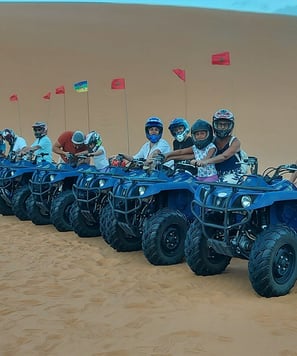

Fes to Marrakech Desert tour 2 days
Experience the best of Fes with our popular tours. From the vibrant markets of Fes to day trips to Chefchaouen, Meknes, and the desert.
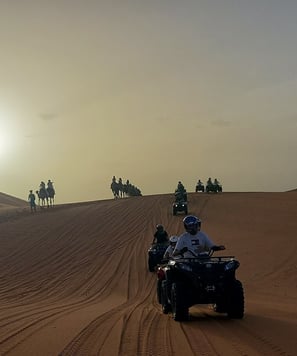

3 days desert tour from Fes to Marrakech
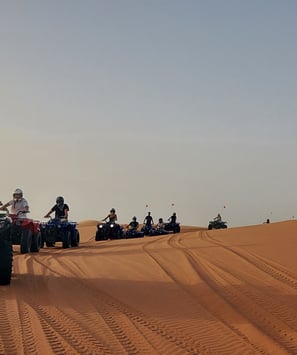

Fes to Marrakech Desert tour 4 days
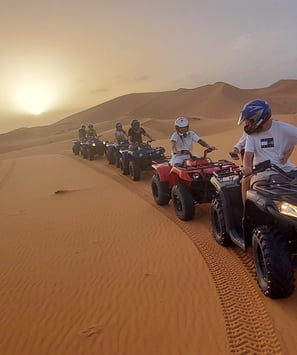

5 days desert tour from fes to marrakech
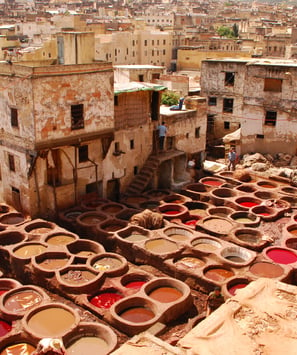

6 Days Morocco Tour From Fes
7 Days Morocco Tour From Fes
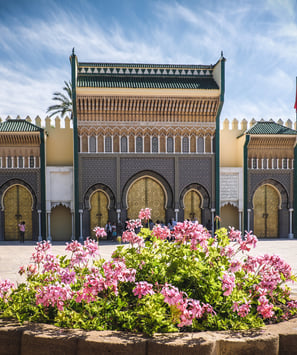

8 Days Morocco Tour From Fes
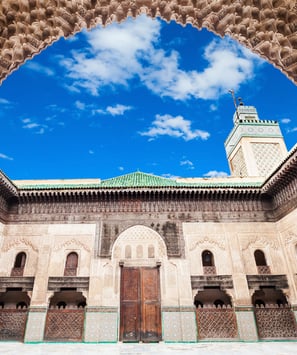

9 Days Morocco Tour From Fes
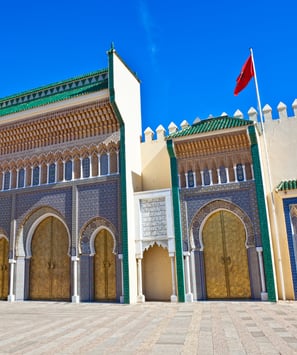

10 Days Morocco Tour From Fes
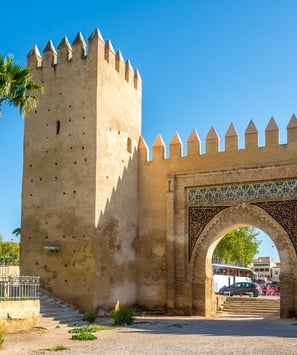

11 Days Morocco Tour From Fes
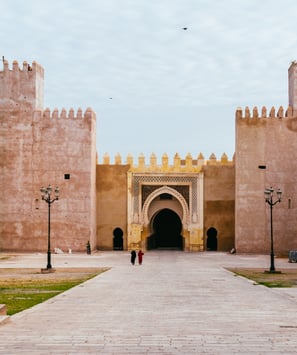

12 Days Tour From Fes
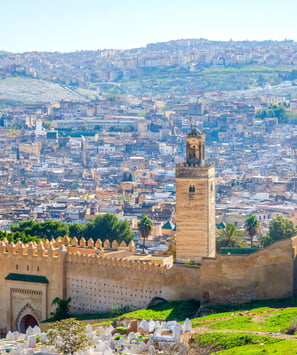

12 Days Tour From Fes
13 Days Tour From Fes to Marrakech
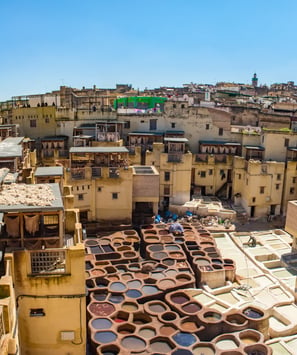

14 Days Tour From Fes to Marrakech
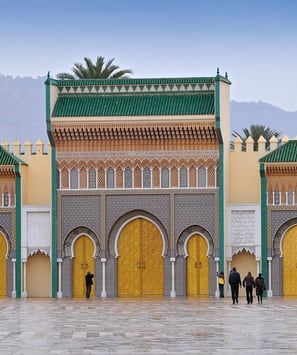

15 Days Tour From Fes to Marrakech
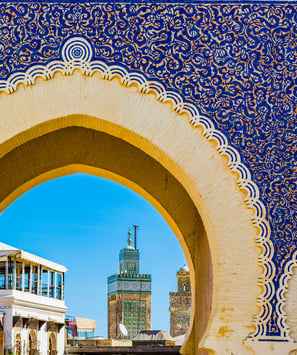

Know Before You Go:
What to Pack for Your Desert Adventure
Alright, desert explorers, let's talk gear! Packing for the Sahara isn't like throwing together a bag for your average beach vacation. We're talking extreme environments here, and being prepared can make the difference between an amazing adventure and a sandy struggle.
First up, let's address the elephant in the room – or should I say, the sun in the sky. The Sahara is notorious for its intense heat during the day, so sun protection is crucial. Pack a wide-brimmed hat that covers your neck and ears. Trust me, your future self will thank you when you're not sporting a lobster-red sunburn. Don't forget high-SPF sunscreen, and reapply often – sand reflects sunlight, intensifying its effects.
Now, here's a surprise for you – deserts can get cold, especially at night. Pack layers! A light, long-sleeved shirt and pants will protect you from both sun and chill. Throw in a warm fleece or jacket for those crisp desert nights when you're stargazing. And speaking of night, a headlamp or flashlight is essential. The Sahara gets dark. Really dark.
Footwear is crucial. You'll want sturdy, closed-toe shoes for walking on sand and rocky terrain. But here's a pro tip – pack a pair of flip-flops too. They're perfect for those midnight trips to the bathroom in the desert camp.
Let's talk hydration. The desert air is incredibly dry and will suck the moisture right out of you. Bring a reusable water bottle – aim for at least 2 liters capacity. And don't forget lip balm and moisturizer. Your skin will drink it up faster than a camel at an oasis.
Now, for the fun stuff. A camera is a must – the landscapes you'll see are truly otherworldly. If you're bringing a smartphone, consider a portable charger. Power outlets can be scarce in the desert.
Here's something many people forget – a small daypack. You'll want this for carrying your essentials during camel treks and walks in the dunes.
Toiletries are important, but keep it simple. Wet wipes are your desert shower. Hand sanitizer is a must. And here's an insider tip – bring a roll of toilet paper. Desert bathrooms can be... unpredictable.
Don't forget any personal medications you might need. And it's a good idea to pack some basic first aid supplies – think painkillers, band-aids, and something for upset stomachs.
Last but not least, bring a sense of adventure and an open mind. The desert has a way of challenging your preconceptions and opening your eyes to new experiences.
Oh, and one more thing – leave some space in your bag. The souks of Marrakech are hard to resist, and you'll want room for those unique Moroccan treasures you'll inevitably fall in love with.
Remember, folks, in the desert, less is often more. Pack smart, pack light, and you'll be ready for whatever adventures the Sahara throws your way. Now, who's ready to hit the dunes?
Best Time to Take the Tour
Alright, desert dreamers, let's talk timing! When it comes to our 3-day Fes to Marrakech adventure, picking the right season can make all the difference between a magical journey and a sweat-soaked slog.
First things first – let's address the elephant in the room: summer. June to August might be prime vacation time for many, but in the Sahara, it's scorching season. We're talking temperatures that can soar above 40°C (104°F). Unless you're part camel, I'd suggest steering clear of these months. The desert heat is no joke, and even the camels look for shade!
Now, if you're after the sweet spot, aim for spring (March to May) or autumn (September to November). These shoulder seasons are the Goldilocks zone of desert travel – not too hot, not too cold, but just right. Daytime temperatures hover around a pleasant 20-25°C (68-77°F), perfect for camel trekking and dune climbing without turning into a human puddle.
But here's a little secret – personally, I'm a big fan of late autumn, especially November. The tourist crowds have thinned out, the temperatures are mild, and if you're lucky, you might catch the date harvest in the oases. There's something magical about watching the locals gather these sweet fruits, a tradition that's been going on for millennia.
Winter (December to February) has its own charm. Yes, it can get chilly, especially at night when temperatures can dip close to freezing. But picture this: crisp, clear days with temperatures around 15°C (59°F), perfect for exploration. And at night? The star-gazing is out of this world. Just pack some warm layers, and you're set for a unique desert experience.
Now, let's talk about an often-overlooked factor – the wind. Spring can bring the Sirocco, a warm, dusty wind that can whip up sandstorms. It's not common, but it's something to be aware of. If you're visiting in spring, pack a light scarf to cover your face, just in case.
Ramadan is another consideration. This Muslim holy month of fasting moves each year, so check the dates. While Morocco is used to tourists, some services might be limited during daylight hours. On the flip side, experiencing Ramadan in Morocco can be incredibly rewarding, with festive nights and a unique cultural atmosphere.
Here's a pro tip: if you're flexible with your dates, keep an eye out for the full moon. A night-time camel trek under a full desert moon is an experience that'll stay with you forever. It's like someone turned on a celestial spotlight just for your adventure.
Remember, no matter when you choose to visit, each season offers its own unique magic. Spring brings wildflowers to the desert valleys, autumn offers perfect temperatures, winter provides crystal-clear night skies, and yes, even summer has its moments – if you can handle the heat, you'll have the dunes practically to yourself.
So, intrepid travelers, when are you planning your desert odyssey? Whether you're chasing mild temperatures, stellar stargazing, or cultural festivals, there's a perfect time for everyone to experience the magic of Morocco's deserts. The Sahara is waiting – when will you answer its call?
Cultural Etiquette and Tips
Alright, culture enthusiasts, it's time for a crash course in Moroccan manners! Remember, we're not just passing through; we're guests in a country with rich traditions and customs. A little cultural savvy goes a long way in turning a good trip into an unforgettable one.
First up, let's talk dress code. Morocco is a Muslim country, and while it's generally relaxed about tourists, showing respect goes a long way. Ladies, pack those flowy, loose-fitting clothes that cover your shoulders and knees. Gents, you're not off the hook – keep those shirts on, even in the scorching desert sun. Trust me, the locals will appreciate it, and it'll save you from a nasty sunburn!
Now, let's address the elephant in the room – or should I say, the hand in the tagine. Moroccans traditionally eat with their right hand. If you're invited to share a meal, follow suit. It's fun, I promise! But here's the kicker – only use your right hand for eating and passing food. The left hand is considered unclean. Don't worry if you're left-handed; just think of it as a cultural ambidexterity challenge!
Speaking of food, if you're invited into someone's home, bring a small gift. Sweets or pastries always go down a treat. And when you're offered mint tea (and you will be, trust me), accept it. It's not just a drink; it's a ritual of hospitality. Refusing can be seen as rude. Besides, who doesn't love a sweet, minty pick-me-up?
Let's talk photos. Moroccans are generally friendly, but always ask before snapping pictures of people, especially in rural areas. Some folks believe photos capture the soul, so be respectful. And if you're photographing in markets or with street performers, a small tip is appreciated.
Now, here's a biggie – the art of bargaining. In the souks, it's not just expected; it's part of the fun! Start at about a third of the asking price and work your way up. But remember, it's not a battle; it's a dance. Keep it light, friendly, and know when to walk away. And please, don't start haggling unless you're serious about buying.
Public displays of affection are a no-no. Save the smooching for private moments. Holding hands is okay for married couples, but anything more is frowned upon.
Here's a tip that'll win you friends – learn a few Arabic or Berber phrases. "Shukran" (thank you) and "As-salaam-alaikum" (peace be upon you) will earn you smiles and maybe even better bargains in the souk!
During Ramadan, be mindful of eating, drinking, or smoking in public during daylight hours. While tourists aren't expected to fast, it's considerate to be discreet.
Lastly, let's talk time. "Moroccan time" is a real thing. Things move at a different pace here, so pack your patience along with your sunscreen. Embrace it – you're on an adventure, not running errands!
Remember, folks, cultural respect isn't just about following rules; it's about opening yourself up to new experiences. These customs and traditions are what make Morocco, well, Morocco! Embrace them, and you'll find doors (and hearts) opening to you throughout your journey.
So, cultural explorers, are you ready to dive into the vibrant tapestry of Moroccan life? With these tips in your back pocket, you're all set to turn your desert adventure into a journey of cultural discovery. Let's show Morocco we're not just tourists; we're thoughtful travelers!
Photography Opportunities
Alright, shutterbugs, get those trigger fingers ready because you're about to embark on a photographic journey that'll make your Instagram followers green with envy! Our 3-day desert tour from Fes to Marrakech is a visual feast, and I'm here to make sure you capture every jaw-dropping moment.
Let's start with the desert, shall we? The Sahara is a photographer's playground, and the dunes of Erg Chebbi are its crown jewels. Here's a pro tip: wake up before dawn for that perfect golden hour shot. As the sun peeks over the dunes, the interplay of light and shadow creates patterns that'll have you questioning reality. And don't forget to look down – those ripples in the sand? They're nature's own abstract art.
Now, for the money shot – you, atop a camel, silhouetted against the setting sun. It's cliché for a reason, folks. Position yourself on the crest of a dune, and voila! Instant wanderlust fuel. But here's a twist – try capturing your camel's shadow stretched out across the sand. It's a unique perspective that'll stand out in a sea of samey desert shots.
When night falls, it's time to switch gears. The Sahara's night sky is a stargazer's dream and a long-exposure photographer's paradise. Bring a tripod if you can, set your camera for a long exposure, and watch as the Milky Way paints itself across your frame. For an added wow factor, light paint the foreground with a flashlight. A illuminated tent or camel against a star-studded sky? Chef's kiss!
As we journey through the Atlas Mountains, keep your camera at the ready. The winding roads offer spectacular vistas at every turn. Look for traditional Berber villages clinging to mountainsides – they provide a perfect sense of scale against the towering peaks. And if we're lucky enough to catch some snow on the higher peaks, that contrast of white caps against red rock is pure photographic gold.
Ait Benhaddou is a photographer's playground. This ancient mud-brick city is all about texture and detail. Zoom in on the intricate designs of old wooden doors, or step back and capture the entire fortress city bathed in the warm glow of sunset. For a unique shot, try framing the kasbah through one of the narrow archways in the city walls.
In the Dades Valley, it's all about those dramatic landscapes. The winding road with its hairpin turns makes for a killer drone shot if you've got one. If not, find a high vantage point and capture the ribbon of road snaking through the rugged terrain. And don't miss the quirky rock formations – the "Monkey Fingers" are begging to be photographed!
Now, let's talk people. Morocco's inhabitants are as photogenic as its landscapes, but remember – always ask permission before snapping a portrait. In the markets, capture the vibrant colors of spice mounds and textile stalls. Look for moments of daily life – a vendor pouring tea, artisans at work, the lively haggling of the souk.
As we arrive in Marrakech, the photo ops shift to urban vibrancy. The Jemaa el-Fnaa square at dusk is a symphony of motion and light. Try some slow-shutter shots to capture the buzz of activity. And don't forget to look up – the intricate tilework and architecture of the medina's riads and mosques are worth a few memory cards on their own.
Remember, the best camera is the one you have with you, whether it's a pro DSLR or a smartphone. It's not about the gear; it's about capturing the moment, the feeling, the essence of this incredible journey.
So, photo enthusiasts, are your batteries charged and memory cards empty? Get ready to fill them with shots that'll transport you back to Morocco every time you look at them. This isn't just a tour; it's your own personal photo safari through one of the most visually stunning countries on Earth. Now, let's go make some memories – and masterpieces!
Sustainable Travel Practices
Alright, eco-warriors and responsible wanderers, let's talk about leaving nothing but footprints and taking nothing but memories (and maybe a few ethically-sourced souvenirs). Our 3-day desert adventure isn't just about ticking off bucket list items; it's about treading lightly on this fragile ecosystem and supporting the communities that call it home.
First up, let's address the elephant in the desert – water. The Sahara's a tad short on the wet stuff, so let's be mindful. Bring a reusable water bottle and refill it whenever possible. Those single-use plastic bottles? They're as welcome in the desert as a sandstorm at a picnic. And when you're freshening up, think Navy shower – wet, off, lather, rinse, done. Your brief spritz is someone else's day's supply.
Now, let's talk trash. The desert's not your personal garbage can, folks. Whatever you pack in, pack out. That includes cigarette butts, which can take up to 10 years to decompose. Keep a small bag for your rubbish and dispose of it properly when we reach town. Remember, camels don't do recycling runs.
Speaking of our humped friends, let's chat about animal welfare. Yes, camel rides are a quintessential desert experience, but make sure you're going with a reputable operator. Look for well-cared-for animals and guides who treat them with respect. If a camel looks overworked or unhealthy, vote with your feet and walk away.
When we're exploring Berber villages or ancient kasbahs, remember we're guests in someone's home. Stick to marked paths, don't clamber over fragile structures for that perfect selfie, and always ask before entering private spaces. Your Instagram feed isn't worth damaging centuries-old mud-brick buildings.
Now, let's talk souvenirs. Sure, that fossilized trilobite looks cool, but removing natural objects from protected areas is a big no-no. Instead, support local artisans by buying handmade crafts. Not only do you get a unique memento, but you're also contributing directly to the local economy. Win-win!
Food waste is another biggie. I know it's tempting to order one of everything at the local market, but be realistic about what you can eat. If you can't finish your meal, see if it can be packed up for later or given to someone in need. In many parts of Morocco, food sharing is a cultural norm.
Here's a tip for the culturally conscious: learn a few words of Arabic or Berber. "Shukran" (thank you) goes a long way in showing respect for local culture. And when you're snapping photos, remember that people aren't tourist attractions. Always ask permission, especially in more conservative areas.
For the tech-savvy travelers, consider downloading apps that support sustainable travel. There are great ones out for finding eco-friendly accommodations or calculating your carbon footprint. Speaking of which, if you're feeling guilty about that long-haul flight, look into carbon offset programs.
Lastly, spread the word! Share your sustainable travel practices on social media. Use those impressive desert shots to inspire others to travel responsibly. Your actions might seem small, but they ripple out, influencing fellow travelers and local communities alike.
Remember, sustainable travel isn't about sacrifice; it's about enriching your experience. By traveling responsibly, you're not just preserving the beauty of Morocco for future generations; you're deepening your own connection to the places and people you encounter.
So, eco-travelers, are you ready to leave Morocco better than you found it? With these practices in your toolkit, you're all set to have an adventure that's good for you, good for the locals, and good for the planet. Now that's what I call a triple win!
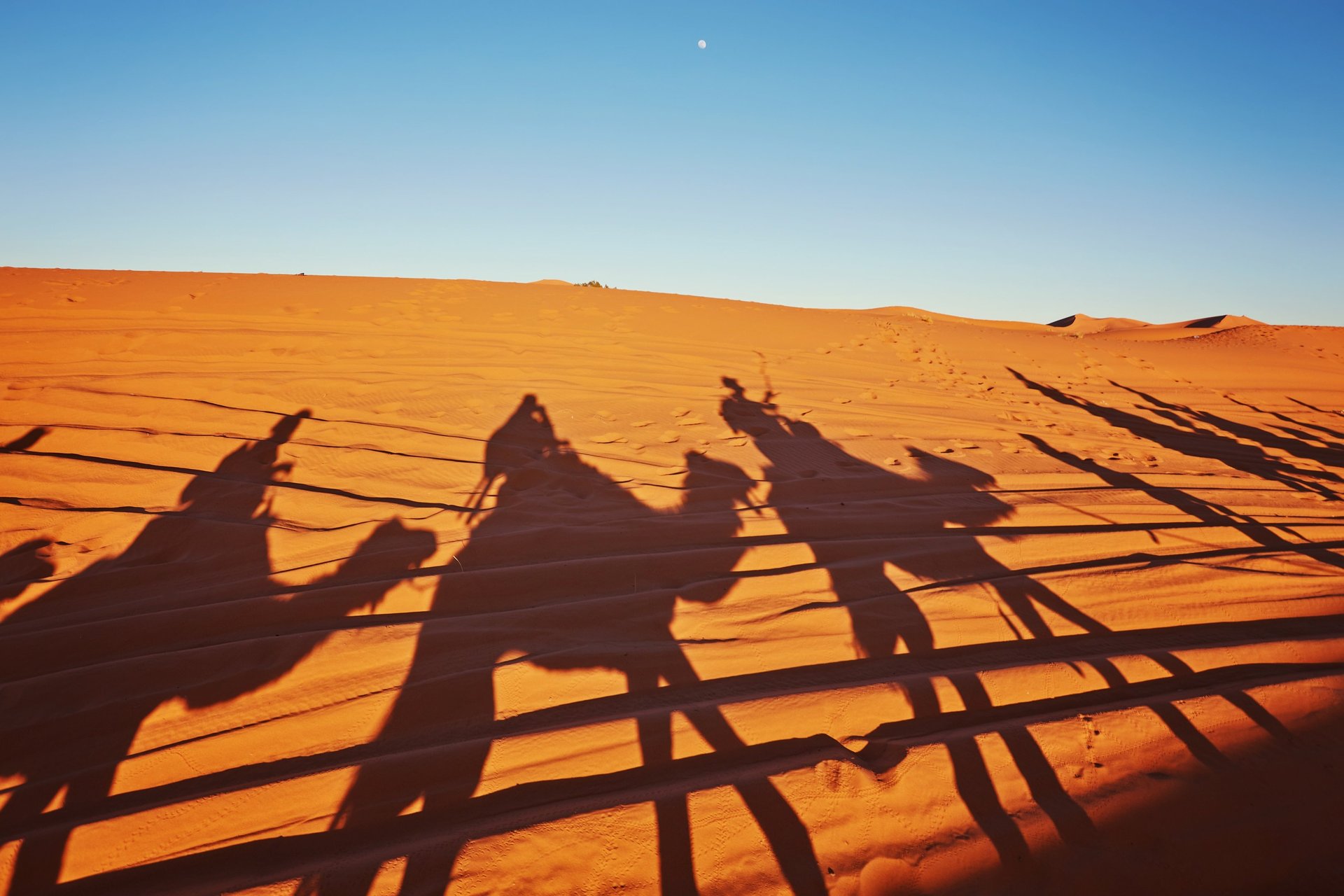
Get in touch
Please use the form below to email us, and we’ll respond as quickly as possible. If you don’t hear from us within 24 hours, feel free to send a WhatsApp message or call us at +212625473756. We look forward to connecting with you!
Address
N 45, Hay El Qods Rue 06, Rissani 52450. Morocco
Contact Us
Our Services
Tangier Tours
Agadir Tours
Hot Air Balloon
Sandboarding
Camel Trekking
Merzouga Horse Riding
Quad Biking
4x4 Desert Safaris
Photography Tours
Desert Camping


